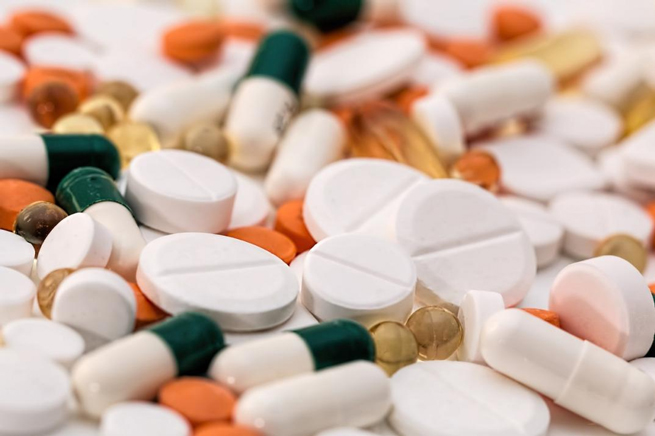
Small molecules have continuously enabled medical breakthroughs and addressed medical needs, saving countless lives. They play a critical role as chemical probes in biomedical research, aiding in the understanding of disease biology. Over the past century, traditional small molecule drugs have dominated drug research. However, new modalities such as proteolysis targeting chimeras (PROTACs) and RNA-targeting small molecules (RSMs), along with biological approaches like antibody-based therapies and cell and gene therapies, have been added to the drug discovery toolbox.
A Historical Review of Small Molecule Drugs: From Aspirin to Modern Renowned Drugs
Throughout history, many small molecule drugs have contributed to medical progress and improved patient lives. Some of these early drugs are still in use today, while others have disappeared from the market but played a significant role in improving treatment for specific indications.
Key Milestones
A timeline of selected small molecule drugs starting with aspirin showcases the range of small molecules as therapeutic agents. Historically, small molecules pioneered the chemotherapy era, with alkylating agents in the 1940s, and later paved the way for targeted cancer therapies with drugs like Novaldex (Tamoxifen, 1977) and Gleevec (Imatinib, 2001). Cancer treatment traditionally focused on specific organs or tissues, such as treating breast or lung cancer.
However, recent treatments that target specific genetic alterations, regardless of the tumor's origin, have shown effectiveness against various cancers, bringing hope to patients with rare, genetically defined cancers.
The Unique Properties of Small Molecules in Drug Discovery
The success of small molecules as drugs is attributed to their inherent properties, including their ability to cross biological barriers and modulate a range of different biological targets. Oral bioavailability is a key feature of most small molecule drugs, allowing for standard oral administration in tablet form. This convenience is a significant advantage over biologics, even if the pharmacological effect's magnitude may be similar.
Another important characteristic of small molecules is their modular structure and easy accessibility through chemical synthesis, allowing rapid changes in chemical structure and systematic improvement of their performance. Small molecules typically exhibit high metabolic stability and are compatible with most drug formulations and routes of administration.
Expanding the Classical Toolbox: New Chemical Modalities and Novel Uses
Small molecules continue to expand into new modes of action, conquering new target spaces, and enlarging the classical toolbox of drug discovery. New chemical modalities and novel ways of using small molecules have emerged, addressing previously undruggable biological targets.
Targeted Covalent Inhibitors
Small molecules can bind to biological targets in non-covalent or covalent manners. Early examples of covalent drugs include aspirin and penicillin. Acetylsalicylic acid covalently modifies cyclooxygenase, and penicillin binds covalently to penicillin-binding proteins. Recently, targeted covalent inhibition (TCI) has become increasingly relevant, successfully addressing difficult targets like the KRAS protein.
Protein-Protein Interactions
Protein-protein interactions (PPI) are essential in many cellular processes, and modulating PPIs is an attractive target for therapeutic intervention. While antibody-based PPI modulators dominate known therapeutic entities, small molecules are gaining attention due to their good oral bioavailability, better tissue penetration, lower risk of immunogenicity, and lower R&D costs.
RNA-Targeting Small Molecules
RNA-targeting small molecules (RTSMs) are emerging as a new therapeutic approach. RNA can present discrete secondary and tertiary structures, creating binding sites for small molecule interactions. The first human RTSM drug, Evrysdi (risdiplam), was launched in 2020 for treating Spinal Muscular Atrophy (SMA).
Bifunctional Small Molecule Conjugates: PROTACs, LYTACs, and Molecular Glues
PROTACs degrade proteins by bringing target proteins and E3 ligases into close proximity, tagging them for proteasomal degradation. Despite their larger size, which poses challenges for oral bioavailability and cell permeability, PROTACs like ARV-110 and ARV-471 have entered clinical trials for cancer.
Molecular glues, such as thalidomide, are smaller and possess traditional small molecule properties. Lysosome-Targeting Chimeras (LYTACs) target membrane and extracellular proteins that PROTACs and molecular glues cannot address, representing a potential future application for protein degradation.
Peptide Modification and Peptide Bionics
Therapeutic peptides exhibit high potency and selectivity but often suffer from low oral bioavailability, low plasma stability, and low membrane permeability. Small molecule permeation enhancers and chemical modifications can address these shortcomings. The first orally bioavailable peptide, Rybelsus (oral semaglutide), was approved in 2019 for treating type 2 diabetes.
Small Molecules in Chemical Biology
Small molecules serve as scientific tools to elucidate pathological or physiological mechanisms at the molecular level and identify or validate drug targets. This interdisciplinary field, known as "chemical biology," has matured over the past 25 years, standing at the intersection of chemistry, biology, physiology, and medicine. Open science initiatives support the generation of an increasing number of chemical probes, facilitating new drug discovery for human diseases.
Enhancing Cell and Gene Therapies
The FDA currently has 22 approved cell and gene therapy products. Small molecules enhance the safety, efficacy, and manufacturing processes of these therapies at different stages. In cell therapy, small molecule additives ensure product quality during cell expansion, cryopreservation, and formulation, improving toxicological profiles and therapeutic effects.
In gene therapy, small molecules enhance the internalization of vectors, target intracellular pathways involved in transduction, and block cellular antiviral pathways. Phenotypic screening remains the preferred method for identifying chemicals due to the complex nature of transduction.
Diagnostic and Non-Therapeutic Applications
Small molecules are widely used for diagnostic purposes, such as positron emission tomography (PET) tracers, X-rays, magnetic resonance imaging (MRI), ultrasound, and near-infrared contrast agents. The diversity of roles reflects the diversity of the applications themselves.
Promoting Organ Transplantation
Small molecules facilitate or improve non-pharmacological interventions like organ transplantation. As immunosuppressants, they control transplant organ rejection and optimize organ preservation, improving transplantation outcomes.
Conclusion
Small molecule drugs have a century-long history of contributing to medical advancements and saving lives. Their unique properties, coupled with new chemical modalities and novel uses, continue to expand their role in drug discovery and therapeutic applications. As science progresses, small molecules will undoubtedly remain at the forefront of innovation, driving future medical breakthroughs.